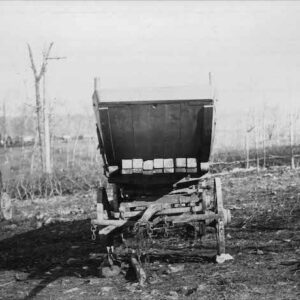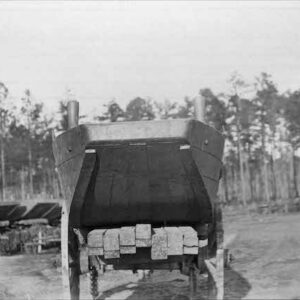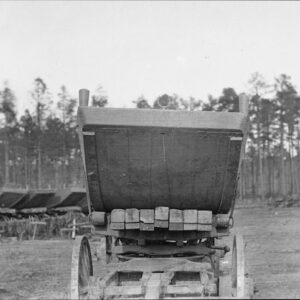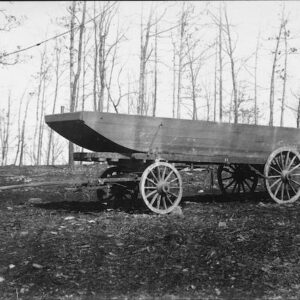| Credit: | by OSullivan (Timothy H.) |
|---|---|
| Date: | 1864.03 |
| Negative Size: | 8 in. x 10 in. |
| Equipment: | bridge pontoon (wood) |
| Locations & Lines: | Rappahannock Station VA; Virginia |
| Military Units: | 50th New York Engineers; Army of the Potomac; US Army |
| Transports: | ambulance wagon; bridge pontoon wagon |
| Sources: | Library of Congress; National Archives |
$6.99
File Details: AILMm, 800 DPI, TIFF, Original Photograph, 40.4 Mb
Image ID: AILM
Gardners Photographic Sketch Book Of The War. Vol. 2, No. 58. Pontoon boat, Brandy Station, Virginia. February, 1864. Here is shown one of the pontoon boats used by the Army of the Potomac in the construction of bridges. Each boat was drawn by six mules, and was accompanied by a wagon, carrying plank, ropes, and anchors. In building a pontoon bridge, the boats would be slid off from the wagons into the water, and rowed out into the stream, where they were made stationary by means of ropes and anchors attached to the bows. Timbers were then laid from boat to boat, and the plank laid down, the whole being firmly lashed together with ropes. In crossing a stream when closely pursued by the enemy, the anchors could be taken up, and one end of the bridge detached from the shore, thus allowing it to swing round with the current, against the bank, where it could be taken up at leisure. When used as a permanent crossing, a box containing a lantern was placed at each end of the bridge at night, for the purpose of signaling the approach of teams. Before any one was allowed to cross the bridge after dark, the sentry would open and close the door of the box three times, as a signal to the sentry on the opposite side that the bridge was about to be occupied, thus preventing the meeting of wagons on the narrow structure. The different armies used a great variety of pontoons during the war. Some had corrugated iron boats, others, frames covered with thick canvas, and on a few occasions inflated gutta percha floats were used. The latter, however, were liable to become unserviceable from perforation in transporting them, or from the bullets of the enemy, and the wooden boat finally came into general use.
Library of Congress says: Pontoon wagon and boat, 50th New York Engineers, Rappahannock (i.e. Brandy) Station, Va., March, (i.e. Feb.) 1864.




